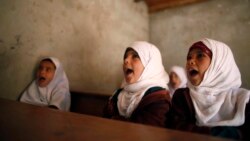There is no end to the benefits of investing in girls, particularly when it comes to education. The benefits of investing in education extend beyond improving the lives of the girls themselves. Studies show a girl with a basic education is three times less likely to contract HIV/Aids.
Every year of schooling can increase a girl’s future earning potential by 10 to 20 percent. She will share 90 percent of her earnings with her family and her community. Her children will be more than twice as likely to survive past the age of 5, and they will be healthier and more likely to go to school than will the children of her less literate sisters.
Nonetheless, some 62 million girls around the world are not in school, while millions more are fighting to stay there. Thus, to increase education opportunities for girls, the U.S. government, through the U.S. Agency for International Development, or USAID, launched the Let Girls Learn initiative.
In late June 2014, USAID announced a contribution of $231.6 million toward education programs in five countries under the Let Girls Learn effort. From this total, Nigeria, for example, will receive over $91 million to increase school enrollment and improve the reading levels of half a million of its youngest school children, half of them girls. In Afghanistan, 5000 new community-based education classes will serve 174,000 girls living too far from government schools.
Partnering with UNICEF, the U.S. will provide emergency education to girls and boys who fled their homes to avoid violence in South Sudan. Similarly, the United States will help provide education for 180,000 children of Syrian refugees living in Jordan. And in Guatemala, USAID is investing $24.9 million in the Lifelong Learning Project to improve access to quality education for rural students; again, half of them girls.
“When girls are denied an education, humanity suffers. Let Girls Learn is a movement to tell the world that an educated girl has the power to lift her family and her community out of poverty,” said Dr. Rajiv Shah, Administrator of USAID. “It is time for all of us to stand up and support a quality education for girls and boys alike all over the world.”
For more information on the Lets Girl Learn effort go online to www.usaid.gov/letgirlslearn

















